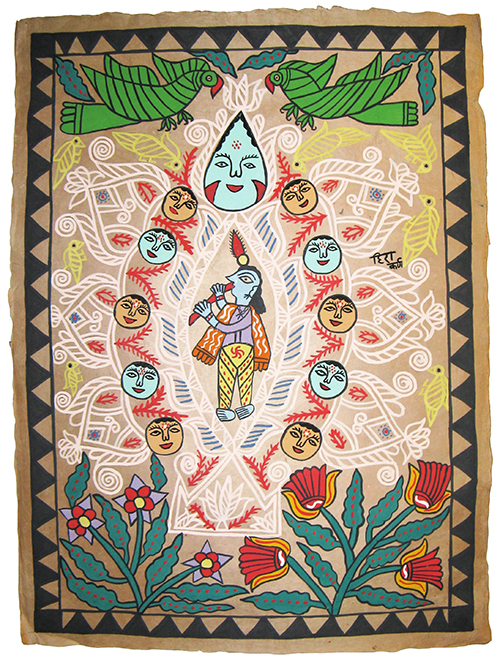Mithila Krishna Painting

Women in the Mithila region of southeastern Nepal and northeastern India have painted in a distinct style for centuries. Created with a variety of tools and natural dyes and pigments, the paintings are characterized by their bright colors, two-dimensional imagery, and geometrical designs. Artists avoid blank spaces and fill them with images of plants, animals, and patterns.
Passed down from generation to generation, this ancient art form originated as painting on the walls of homes to commemorate marriages and to decorate wedding chambers with scenes from Hindu epics. Since the 1960s, women have been encouraged to paint on paper, cloth, or canvas, and to sell their works as a source of income. This form is often referred to as Madhubani art, as it originated in the villages around Madhubani, India. However, Janakpur, Nepal, as the former capital of the kingdom of Mithila, has also emerged as a center for preserving and promoting this artform, and is the source of this painting. Support from the government and non-profits has helped paintings like this one reach an international audience.
Traditionally, women engaged in prayer and mediation while painting to draw deities into their work. Today, the paintings often depict religious events or contain ritual subject matter for specific occasions like births, weddings, or festivals. Images of Hindu deities like Vishnu, Ganesh, Radha, Krishna, Sita and Ram are common. This painting shows Krishna, a popular deity associated with compassion and child-like transcendent wisdom. It is painted on rice paper and signed by the artist as “Hira” which translates to “diamond.”
This painting is featured in two virtual exhibits, Faith: Five World Religions and Healing Arts.

